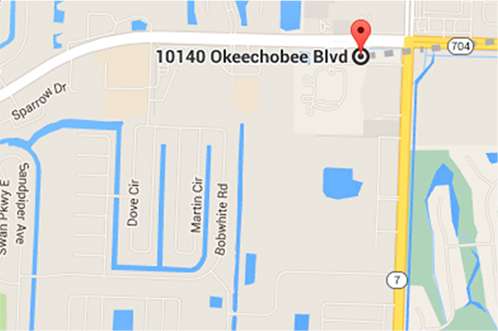FIFTY SHADES OF MAC
March 21, 2016 | | 0 Comments
Introduction
Are Mac computers virus proof? The simple answer is… no. The latest Mac computers run OS X, which is thought to be safer than most operating systems, but is in fact, not virus proof. For example, look back at the Mac Flashback Trojan, a type of malware, which stole banking and personal information. This hit over 600,000 Apple users. Looking at www.apple.com, the previous claim that Apple devices cannot get viruses has been removed and replaced with “It’s built to be safe”. One of the worst pieces of malware known to Macs is the Thunderstrike 2 worm, which infects the firmware of Apple computers, making it undetectable. Once infected, not only can the worm render your computer useless, but it’s designed to spread from one Mac to another. Other viruses have the ability to hijack your personal files and hold them at ransom for a fee. These threats are some of the worst out there as they have a tendency to strike entire companies and hold vital company files for ransom. With the world of malware, viruses and technology evolving around us it is even more important to ensure the safety of your computer and personal information.
The Solution
Today with iOS/OS X devices making up over 14% of the major operating systems in use, hackers are starting to attack the once safer OS X. At yearly events, many major browsers are hacked, such as Safari at the Pwn2Own contest, Chrome, Firefox, etc. These conventions allow Apple developers to review the tactics in which hackers and viruses affect your Mac computer and supplement these threats with frequent security updates. In addition to threats from hackers, macs are vulnerable to copycat software such as Mackeeper, which mimics the features of Timemachine to trick users into downloading it. An effective solution to these threats is ESET Antivirus Software for Mac. This elite software performs real-time scans and removes a multitude of viruses. ESET has proven itself so well, in fact, that it is sold by apple (at a premium of course).
Lions, Tigers and Free Mac Security Software
After reading this, many people may think “Well I have free software from ___, so I’m protected”. The catch, however, is that most of the free versions offered only work on a scan by scan basis, meaning that it won’t actually find an infection until after it’s on your machine and you run the software manually. Once an infection enters your computer, it can spread like wildfire! The reason these companies do this is that they all offer paid versions of the same antivirus software, which runs in real time and are constantly scanning and monitoring, which makes the upsell a no-brainer. You may use the free version, just be sure to approach it with caution and the realization that you still can be infected. It seems no computer is safe with viruses evolving and getting more and more complex every day. However, equipped with a fresh copy of ESET Security for Mac, everyone can rest at ease and trust that their computer and sensitive information are safe.
You may remember back in the mid-2000’s the commercial from Apple had the “Hi, I’m a Mac. And I’m a PC.” commercial, you may remember the gist of it. Mac is more secure than PC, Mac doesn’t get viruses, and has the cleanest and most efficient operating system. This may have been the case 10 years ago, but today Mac computers are more susceptible to Viruses and malware infections than ever before. Shortly after the campaign of commercials from Apple promoting their product for having a superior OS and offering unrivaled protection, the first infection in 2006 came in the form of a Trojan/Worm combo that quickly spread through Apple’s instant messaging platform iChat. The trojan spread through iChat as a fake attachment of photos once installed the infection went through recent applications and injected malicious code rendering them unusable. Ultimately the threats from the web are inevitable and it is pertinent to stay protected.
Mac Operating Systems
(all of which are susceptible to infections)
| Version | Code Name | Processor support | Kernel | Release date |
|---|---|---|---|---|
| 32-bit PowerPC | 32-bit | August 31, 1997 | ||
| Mac OS X Server 1.0 | Hera | March 16, 1999 | ||
| Public Beta | Kodiak | September 13, 2000 | ||
| Mac OS X 10.0 | Cheetah | March 24, 2001 | ||
| Mac OS X 10.1 | Puma | September 25, 2001 | ||
| Mac OS X 10.2 | Jaguar | 32/64-bit PowerPC | August 24, 2002 | |
| Mac OS X 10.3 | Panther | 32/64-bit PowerPC | October 24, 2003 | |
| Mac OS X 10.4 | Tiger | 32/64-bit PowerPC and Intel | April 29, 2005 | |
| Mac OS X 10.5 | Leopard | October 26, 2007 | ||
| Mac OS X 10.6 | Snow Leopard | 32/64-bit Intel | 32/64-bit | August 28, 2009 |
| Mac OS X 10.7 | Lion | 64-bit Intel | July 20, 2011 | |
| OS X 10.8 | Mountain Lion | 64-bit | July 25, 2012 | |
| OS X 10.9 | Mavericks | October 22, 2013 | ||
| OS X 10.10 | Yosemite | October 16, 2014 | ||
| OS X 10.11 | El Capitan | September 30, 2015 |

